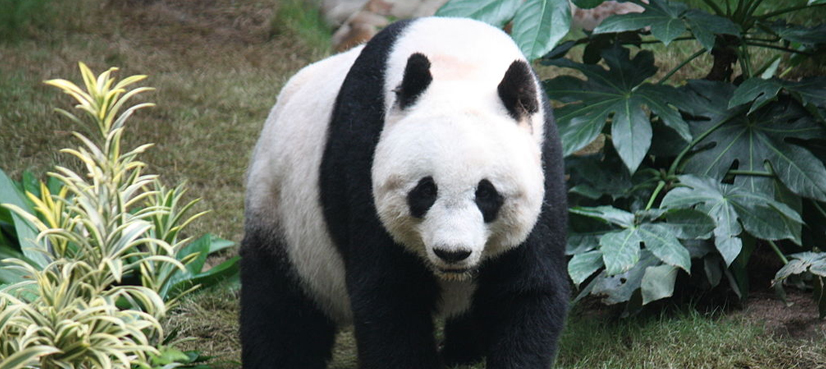The news was announced as part of an update to the Red List of the International Union for Conservation of Nature (IUCN), which praised Beijing’s efforts.
China, however, has refrained from self-congratulation and stressed that the panda — which symbolises wildlife protection efforts worldwide — is still under threat.
The number of giant pandas in the wild in China has grown by 16.8 percent over a decade, from 1,596 in 2003 to 1,864 in 2013. The number in captivity rose from 164 to 375 in the same period, according to the State Forestry Administration.


How has China done this?
1) Creation of nature reserves
China has 13 reserves devoted to giant pandas, with the first set up in 1958. They have a dual objective: to prevent poaching of the species and to preserve bamboo forests, which the country has massively replanted. Bamboo constitutes almost the entire diet of a panda — an adult will eat an average 20 kilogrammes (45 pounds) a day. But there is cause for concern: due to global warming, the IUCN predicts that more than a third of bamboo forests could vanish within 80 years.
2) Subsidies for farmers
The government pays subsidies to farmers living near the reserves, explains Yang Fuqiang, of the American NGO Natural Resources Defense Council. In return they promise
to avoid damaging the environment and refrain from using chemical fertilisers or pesticides. The state also compensates victims of panda attacks, with a farmer badly bitten on the thigh receiving more than 80,000 euros ($89,280) last year.
3) Welcome foreign NGOs
For over 30 years China has welcomed international organisations wishing to study pandas. They can provide not just expertise but also media exposure. The first such visit, according to Yang, was in 1979 by the World Wide Fund for Nature (WWF). Its world-famous logo features the panda and contributes to its global popularity.
4) Use ‘panda loans’
By loaning specimens to foreign zoos (Beauval in France, Vienna in Austria, Pairi Daiza in Belgium, for example), often after intense diplomatic negotiations, China makes money which is used for conservation efforts. Currently 40 Chinese pandas are on loan in 15 countries.
5) Don’t rest on your laurels (or bamboo)
Far from basking in self-congratulation following the IUCN report, China believes that the giant panda “remains in imminent danger”. Its forestry department pointed Monday to “destruction of the habitat of the giant panda, which continues to threaten its survival” and limits exchanges between different isolated groups.
The administration said increasing exchanges between groups to ensure genetic diversity was a priority, and described the IUCN move to change the panda’s status as “premature”.


Leave a Comment